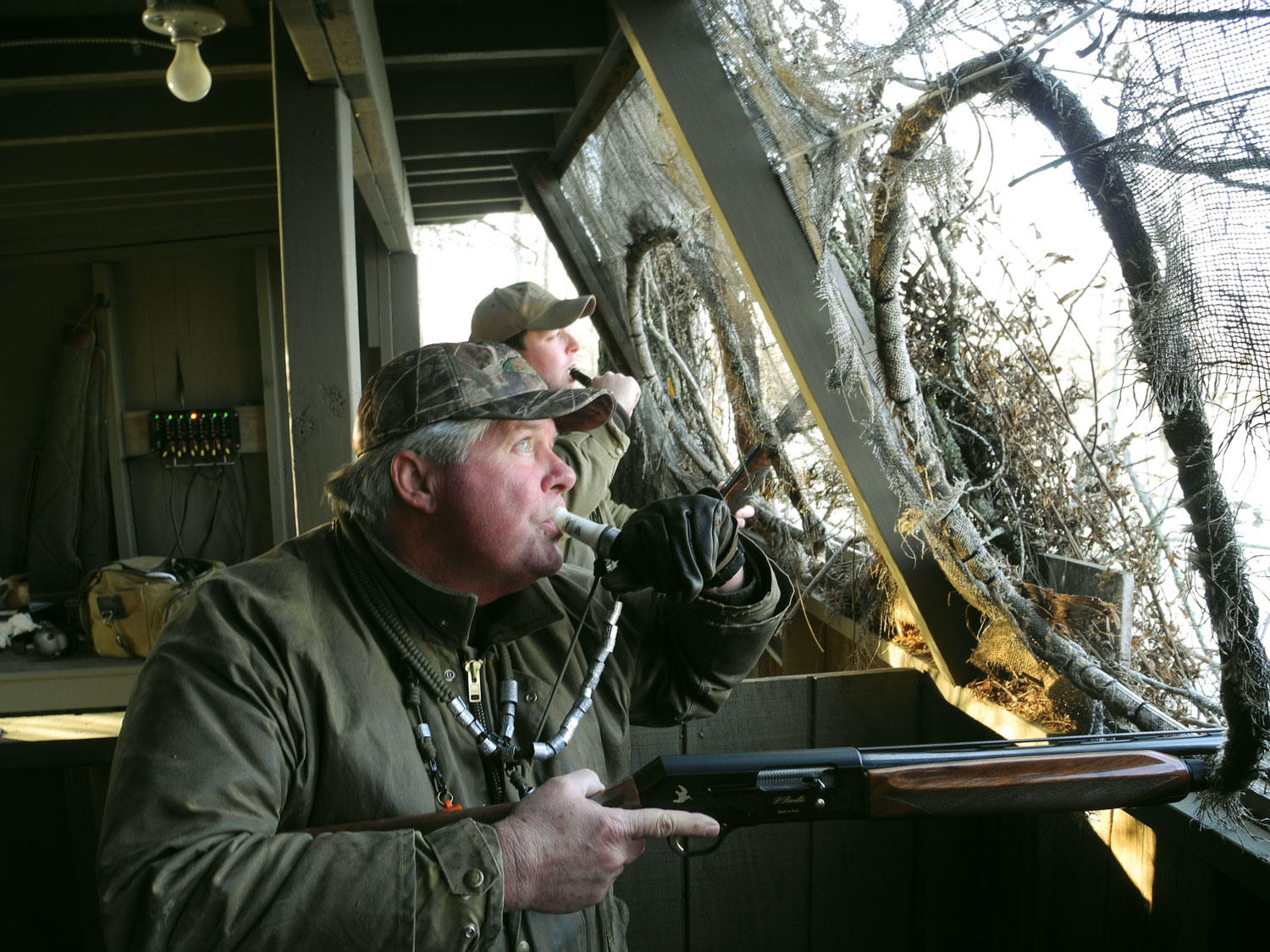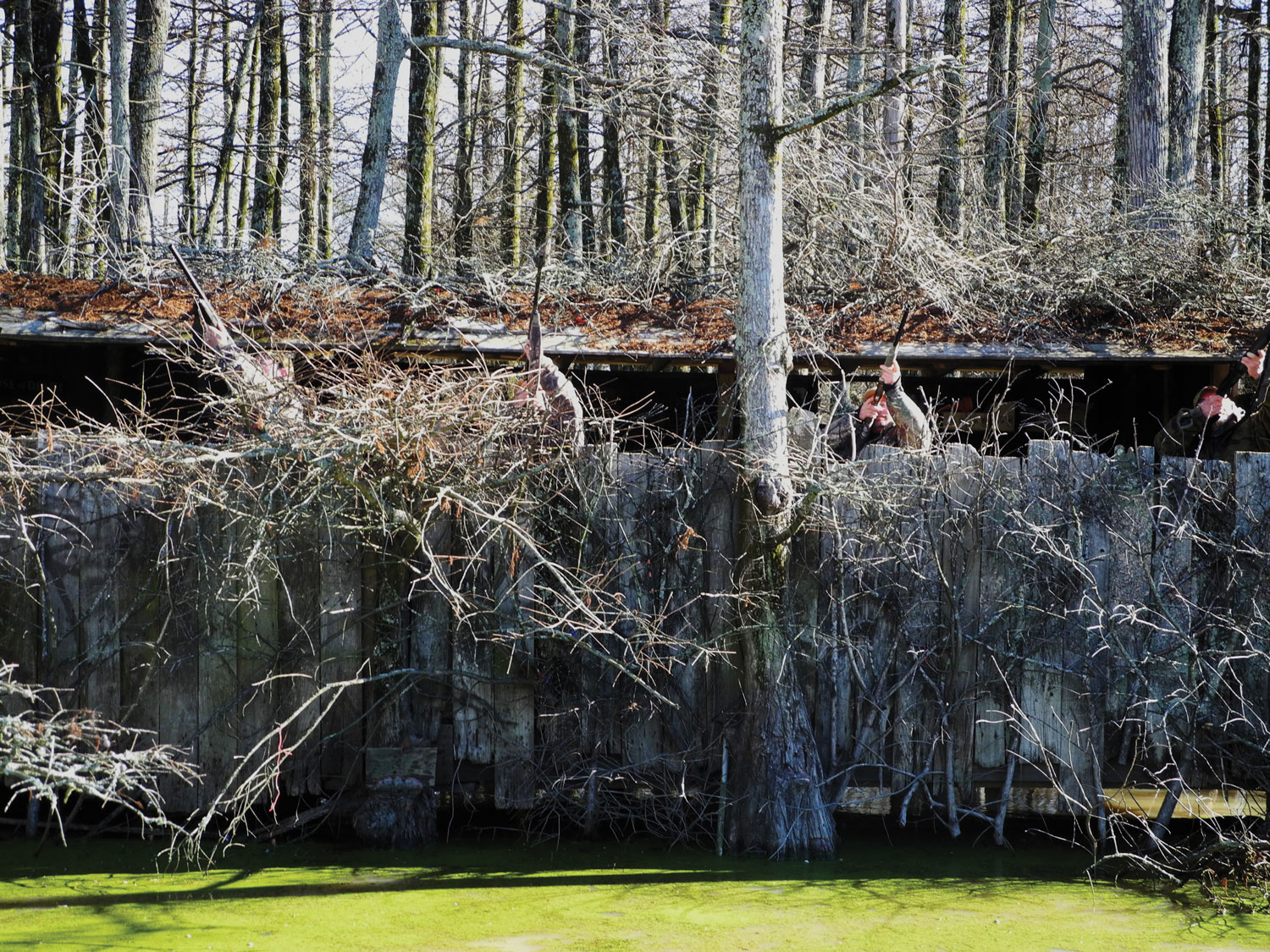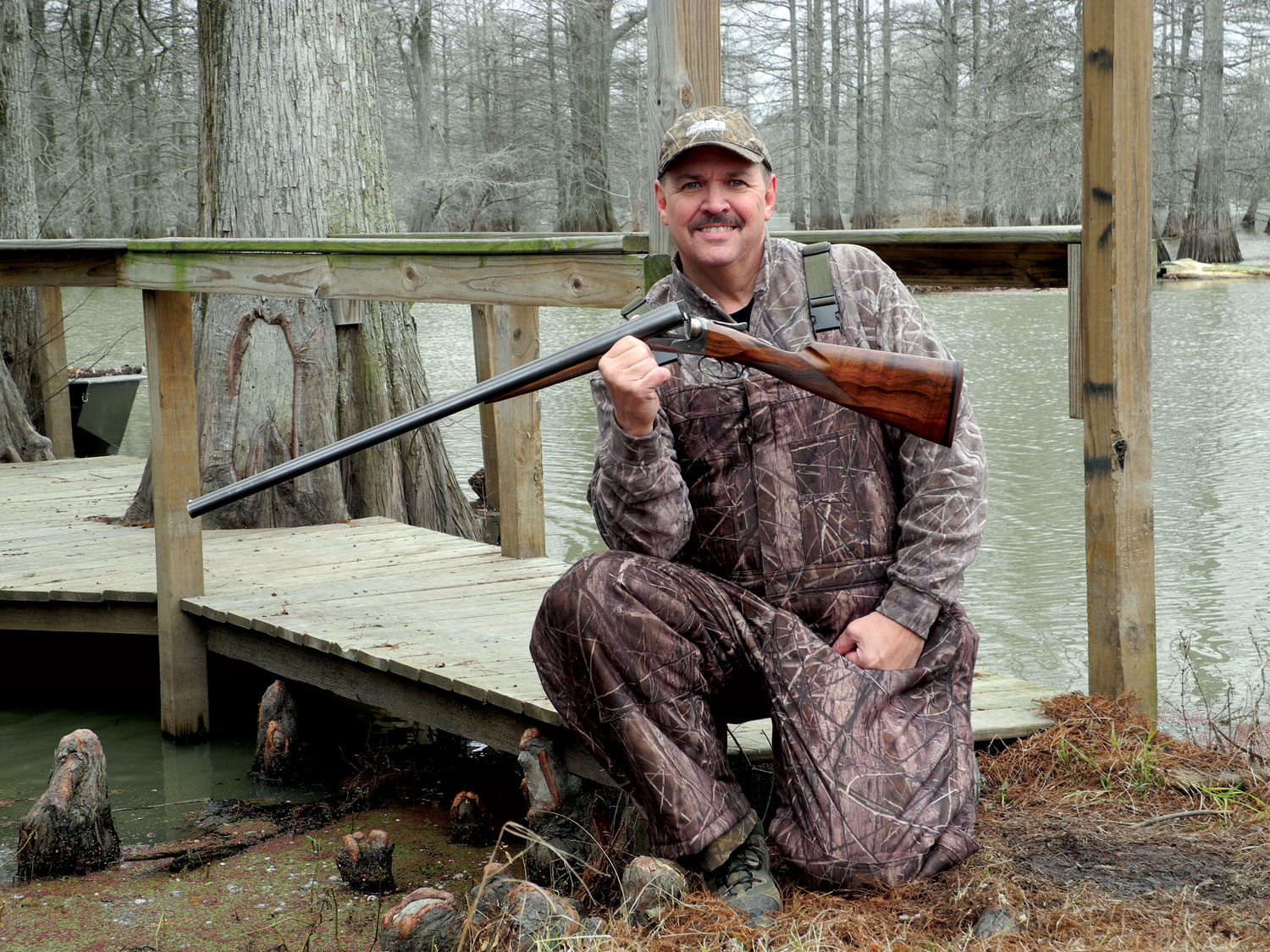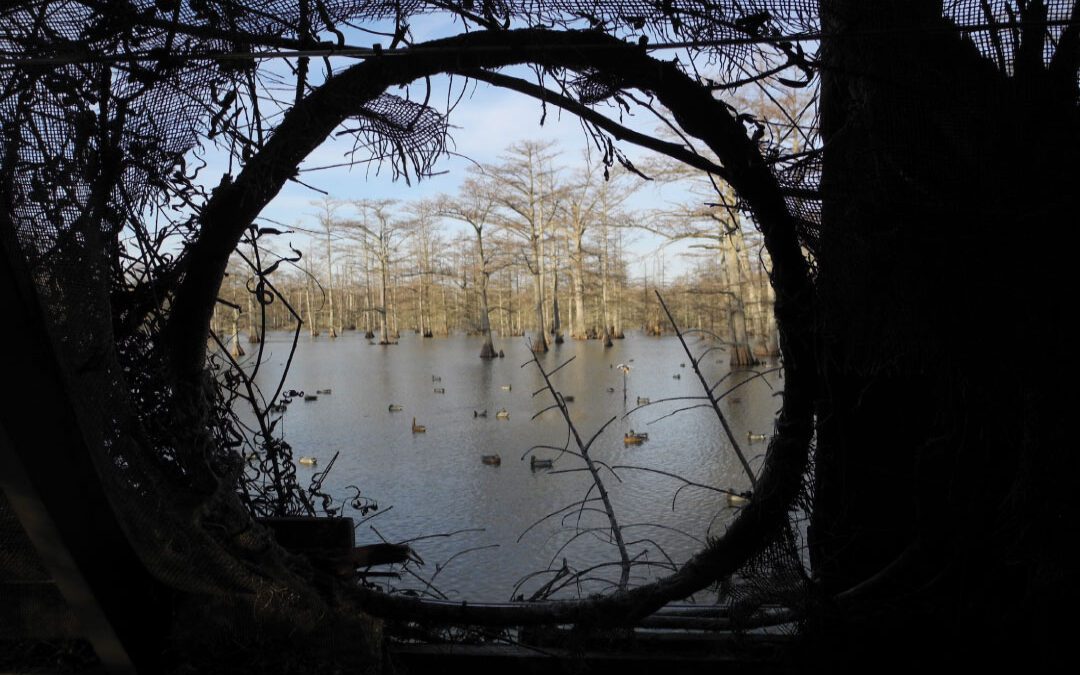The Mississippi Delta is a land of hard-working people and enduring legends. Many in this agricultural region farm thousands of acres in cotton, soybeans, wheat, corn and any productive crop that will grow in topsoil built up from centuries of rotting vegetation over miles of flat terrain.
Residents say the crossroads location in this area is where famed blues performer Robert Johnson supposedly made his deal with the Devil, one of many timeless tales of the Mississippi Delta. Yet, this land of mystery holds other secrets mostly known by waterfowl hunters, a legacy divulged through a famed outdoor scribe.
Nash Buckingham wrote in 1934 of sacred waters on Beaver Dam Lake in his famed collection of short stories, De Shootinest Gent’man. He wrote of a time when duck numbers were extraordinarily high and fewer hunters competed for the birds. Today, the fabled waters Buckingham loved are still inundated with waterfowl that migrate down from the northern states.
Theophilus Nash Buckingham was born May 31, 1880 and died March 10, 1971. He was considered one of the most widely renowned and best-loved outdoor writers of his time and remains a favorite to many present-day readers. He wrote nine books and hundreds of articles that regularly appeared in the most popular sporting magazines.
For me, visiting Beaver Dam Lake was like a pastor visiting the Holy Land. Sacred waters.
The lake has changed somewhat since Buckingham’s days. There is less emergent vegetation, though a good stand of flooded timber still makes it interesting for hunters navigating their boats in the dark, a trip once made by kerosene lantern light.
Beaver Dam Duck Club was started in 1878 when the first members rode steamboats down the Mississippi out of Memphis, then boarded trains to this waterfowling mecca. The first hunters arrived just 13 years after the Civil War ended, no doubt bringing needed money to the region. Ducks and geese crowded into this isolated stretch of Mississippi River that created the oxbow now known as Beaver Dam Lake more than 10,000 years ago. Today, the ducks and geese still return in late fall and winter.
During the warm months, lethal cottonmouths, some thick as softballs and more than four feet long patrol this swamp. Few alligators remain in Beaver Dam Lake, which probably explains why so many snakes exist. Alligators occasionally dine on the succulent meat of these very dangerous reptiles. Thankfully, the chills of winter press these slithering threats into hibernation, which makes duck hunting a whole lot safer.
Snakes aside, I felt a flush of excitement in early January of 2012 as we loaded our gear into a sturdy jonboat on Buckingham’s sacred waters. Soon we were motoring through the darkness, following a narrow path cut through a thick stand of cypress trees.
Occasional reflectors marked the way for the guides who admitted that getting lost in these dark swamps was always possible, even after hundreds of trips guiding other hunters. Every man in our group felt he knew Nash Buckingham, because the famed writer’s spirit has left a presence that is felt on many hunts.
After a five-minute boat ride, I was astonished to see our massive blind – 42 feet long and 8 feet wide. The sides were made of old lumber with dead vines and branches covering the roof. I think even Buckingham, who hunted the lake in much smaller blinds, would have been astonished at its size.

Mike and Lamar Boyd call from close by the main 40-foot long duck blind.
Just as dawn was breaking we climbed into the weathered structure and settled in. Electric lights overhead revealed a full-sized kitchen stove in the back corner flanked by shelves stocked with shotgun shells and breakfast supplies, including instant grits with bottles of honey. A sign on the back wall simply stated,
“House of Death.”
The blind showed evidence of numerous duck hunts over past years. Crude carvings decorated the walls and piles of shell casings and duck feathers were strewn across the scarred wooden floor.
With only a few minutes before legal shooting time, we uncased our guns and loaded up. Most of us leaned against the sturdy wall, talking in excited yet quiet voices.
Legal shooting time soon arrived and our eyes surveyed the sky. Like most duck hunts, the action started early as a brace of mallards curled around from the east to take a look at our set of more than 200 over-sized decoys. Several of the hunters started a series of light quacks and feeder chuckles, a less aggressive calling approach than used by hunters from other parts of the country.
The early morning sun illuminated the drakes’ brilliant green heads, making them an even more tempting target. We’d pass up the drab-brown mallard hens to save them for future breeding stock.
The flock swung closer and someone yelled, “Take ’em!” Six shotguns broke the Delta swamp’s silence and four ducks splashed among the decoys.

Minutes later a big flock of gadwalls, commonly called gray ducks in the South, followed the mallard’s flight path and began circling and listening to our calls. They made several passes before pitching into our set. Two gadwalls stayed behind while the rest of the flock lifted up and over the treetops.
The morning ended when 30 gadwalls made a wide turn to the north and approached from the right. The flock made a couple of wide circles around our blind and then dropped straight into a six-gun salute. Everyone‘s steel shot found feathers and a half-dozen ducks splashed down, their breasts later to be wrapped in bacon and cooked on the grill.
Shooting ducks is only part of this hunt for the area’s residents and visitors. Waterfowl enthusiasts consider Beaver Dam Lake sacred waters because of Buckingham’s earlier accounts.
“When Nash Buckingham hunted here, many of the hunters rode the train from Memphis to Evansdale, Mississippi,” explained Will Owen Jr., owner of the blind in which we hunted. “There were twelve to fifteen members in this Sportsman’s Club on the lake, including Buckingham’s dad. My uncle hunted with him in this spot and a place just behind us. I started hunting here in high school and have ever since.”
In the 1930s the lake was filled with buck-brush and lily pads that would raise havoc with an outboard motor. Hunters cut paths so they could push-pole their wooden Jon boats and jump-shoot the birds. Beaver and nutria eventually killed the aquatic growth and the cypress tress took over.
Club records show that the last legal Mississippi limit of 25 mallards was shot on Beaver Dam Lake’s Tunica Stand during a blizzard that shut the state down for several days.
The following morning we hunted from a blind on the other side of Buckingham’s cherished water. Few ducks came into the set, but I was introduced to a twin of “Bo-Whoops,” Buckingham’s famous double-barrel Super Fox H.E. Grade that recently sold at auction for $175,000 and was generously donated to the Ducks Unlimited Museum. On a hunt in 1948, Buckingham left the gun on the back of a vehicle and it fell off as they drove away. He never stopped searching for the gun, which didn’t surface until after his death.
“Buckingham’s “Bo-Whoop” was so-named because of its deep report when shot,” said Mike Boyd, who along with his father operate Beaver Dam Hunting Services on one end of the lake. “It was a heavier framed gun with both barrels bored out to full chokes for longer shots. We don’t shoot long distances now, but try to decoy ducks in close.”

The author shows off a 1926 H.E. Grade Super Fox, said to be a close match to Nash Buckingham’s famous gun he named Bo-Whoop. Photograph by Tommy Aikens.
Lamar Boyd, Mike’s son, shoots a 1926 H.E. Grade Super Fox like Bo-Whoop. A closer look at the barrels showed a BB sight on the end and no rear sight, the latter typical of most modern shotguns. Shooting this well-balanced gun requires laying your cheek on the stock and looking straight down the barrels.
I swung on a mallard with this beautiful gun and cleanly missed. My excuse was the absence of a ventilated rib and elevated sights. Mercifully, no one commented.
“We just try to hunt like Nash did,” Lamar said. “I know he is still here with us on every hunt.”
Lamar is deadly with the old Super Fox, which made my miss that much more painful. But he didn’t rub it in, an act of kindness to an old hunter.
Leaving the marsh after our last hunt brought mixed emotions. Would I ever hunt this cherished lake of waterfowling history again? I felt my hero’s spirit on the hunt, and when I wrote this story of his sacred waters, I only hope the old master of waterfowling lore approved.
IF YOU WANT TO GO
Beaver Dam Lake is close to Tunica, Mississippi, a fine Delta town about an hour’s drive from Memphis on I-55. We stayed in the Harrah’s Hotel and Casino during our waterfowl hunt and were treated to a fine steak dinner and other excellent entrees.
My most memorable meal was breakfast in the Blue and White Restaurant in Tunica where a big crowd of duck hunters swapped stories and ate stacks of pancakes with sides of bacon, eggs and grits. I talked to some of the hunters at nearby tables and enjoyed tales of recent hunts that Buckingham would have enjoyed.
Tunica has nine Los Vegas casinos and more than 6,000 hotel rooms. Sports enthusiasts can enjoy three golf courses, indoor tennis, and skeet and sporting clay courses. After a day of playing, full-service spas are available. For those with less energy, there are award-winning museums and a ride on the Mississippi River aboard the Tunica Queen River Boat.
For more information about hunting Beaver Dam Lake, contact Mike Boyd at Beaver Dam Hunting Services: (662) 363-6288. To Hunt Mississippi, check www.mdwfp.com or for outfitters, www.visitmississippi.org and click on outdoors. For information about Tunica, contact their visitor’s bureau at: (888) 488-6422 or visit www.TunicaMississippi.com.

